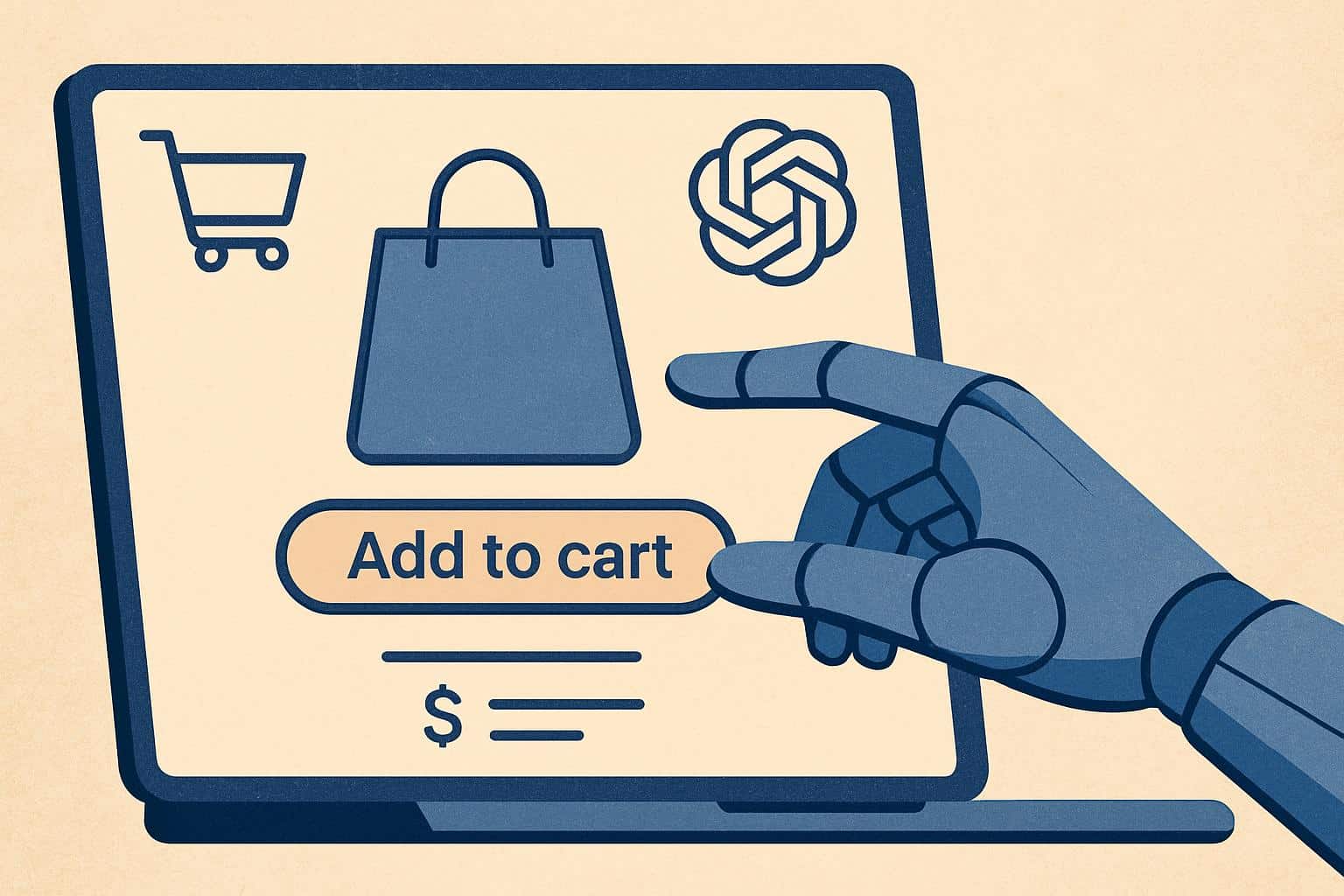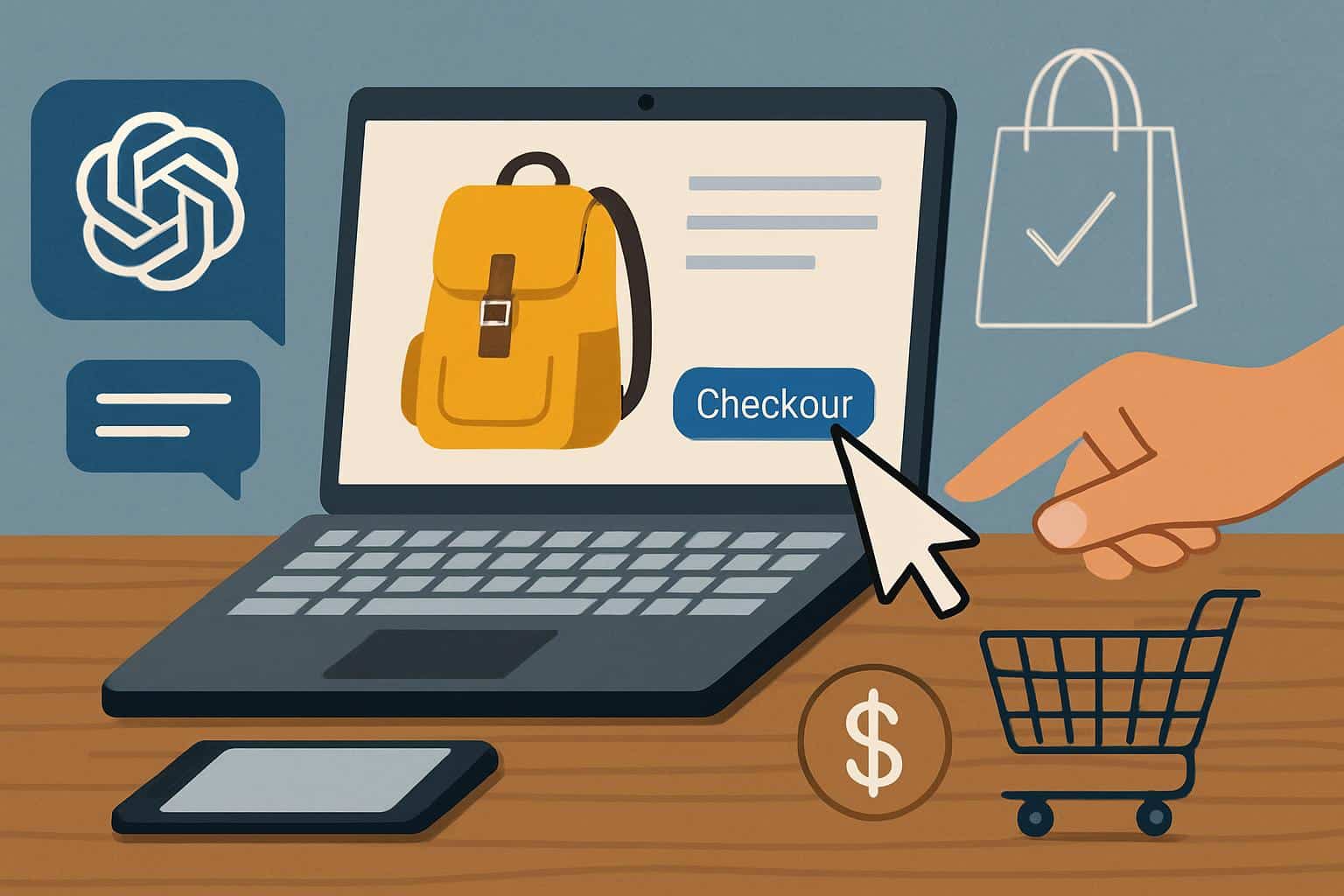ChatGPT can do more than recommend products. And because Instant Checkout is connected to Shopify, it can actually purchase the item for you. It’s a triumph for agentic AI and a frictionless shopping pitch, but the system still relies heavily on one ingredient that machines can’t yet synthesize themselves: trustworthy human experience.
What Instant Checkout Really Changes for Shoppers
OpenAI’s partnership with Shopify merchants (which number more than a million storefronts) can make a product recommendation an immediate transaction, without having to open a new tab. That suppresses drop‑off, and that’s why retailers obsess over it. And it sidelines the traditional avenues of discovery where ad dollars circulate. Amazon’s advertising business alone pulled in more than $46 billion based on recent company filings, numbers that are built on search exposure and shopper intent.
- What Instant Checkout Really Changes for Shoppers
- Why Human Reviews Still Count in AI-Driven Shopping
- The Incentive Problem in AI Training Data Pipelines
- Trust Needs Provenance and Oversight in AI Shopping
- How to Shop with AI the Smart Way and Avoid Pitfalls
- Future: Keeping a Human in the Loop for AI Shopping

When AI agents funnel buyers directly to a merchant’s cart, those upper‑funnel ad impressions disappear. The upside for OpenAI and retailers is clear. For marketplaces and media sources that fund product testing with ads and affiliate revenue, the change poses some real pressure.
Why Human Reviews Still Count in AI-Driven Shopping
LLMs do not unbox a blender or stress the stitching of a backpack, nor do they measure TV color accuracy. They are aggregating and curating what other people who did those things have already published. That’s because the quality of an AI shopping suggestion is limited by the strictness of human censors in its training and immediate availability.
Think about the labor of ordinary labs and beat reviewers every day. Consumer Reports subjects appliances and cars to standardized testing. Rtings measures both how well the screen and speakers sound. Independent reviewers disassemble laptops, drain‑and‑recharge battery cycles, put microphone noise rejection to the test. Those numbers will capture problems — such as flimsy hinges or firmware bugs — that the specs and marketing never do.
This is just a thin layer the public depends on. BrightLocal’s local business consumer survey shows that almost all consumers have read reviews for a local business, and McKinsey research has quantified the lift in revenue performance from relevant recommendations and personalization: 5–15 percent. The lift does rely on accurate inputs, however. There have been a couple of academic audits by Stanford and Berkeley which have found non‑trivial rates of hallucination in big models, particularly on fresh or niche topics. When facts are scarce or swiftly changing, AI guesswork rushes to fill the void.
Some recent misfires in automated answers across the web — bad kitchen advice, weird product tips — have illustrated the limits. You don’t want some summary bot who’s never laid a finger on a nonstick pan to be your arbiter of which coating is safest, or which car seat fits your newborn.
The Incentive Problem in AI Training Data Pipelines
There’s also a supply issue. If AI systems take the market but not the costs of creating trustworthy product knowledge, there will be less backing for testing than is obtainable by other firms. The result is a skewed data pipeline, and the recommendations that ride on top of it deteriorate, too.

Some major players are trying to fix the economics. OpenAI has done licensing deals with News Corp, the Financial Times, Reddit, and Shutterstock because it recognizes there is value in fresh, high‑quality inputs. That’s a good start, but most of the hands‑on product expertise is with specialized reviewers, labs, forums, and creators who need sustainable revenue to keep publishing.
Trust Needs Provenance and Oversight in AI Shopping
Regulators are watching. The Federal Trade Commission’s Endorsement Guides stipulate the disclosure of paid endorsements and prohibit misleading claims. The AI Act in Europe presses for transparency of systems that affect consumers. Standards for where things come from, like the C2PA content credentials, can help trace where claims originate, a useful curb when an AI agent is about to charge your card.
Platforms should go further. Sources, testing, and conflict of interest should come by default for AI‑driven recommendations leading to checkout. If confidence is low, the agent should make you seek human reviews, not bluff. “Just because the products evolve with new firmware updates and manufacturing runs, you need live links to what is being tested now, not snapshots of pretraining,” he says.
How to Shop with AI the Smart Way and Avoid Pitfalls
Narrow the field with ChatGPT, and verify with humans. Check out recent reviews from established testing sources and long‑form reviewers that include methodology. Compare user comments on a minimum of two separate communities and catch those early bugs or Quality‑Control pendulum swings.
Ask the agent to provide sources and succinct summarizations of trade‑offs, not simply choose a winner. Check the essentials — return windows, warranty terms, and availability of parts — before you click that buy button. For safety‑critical classifications, look for certifications like UL, FCC, ENERGY STAR, or FDA approval. And keep in mind that price tracking, retailer reputation, and support quality are just as important as specs.
Future: Keeping a Human in the Loop for AI Shopping
Agentic AI will make checking out a snap, but it can’t supplant first‑hand assessment, responsibility, or judgment. The ideal path is a division of labor: machines to triage options and automate the mundane parts, humans to vet, contextualize, and stand behind that call.
If companies would like AI shopping to be trusted at scale, they’ll have to continue investing in the people who produce the knowledge that AI repackages. If not, then the recommendations might become blander, the buys quicker and the results worse.

